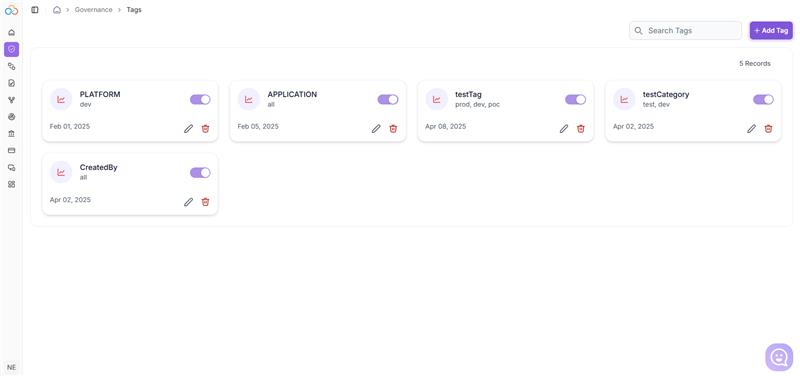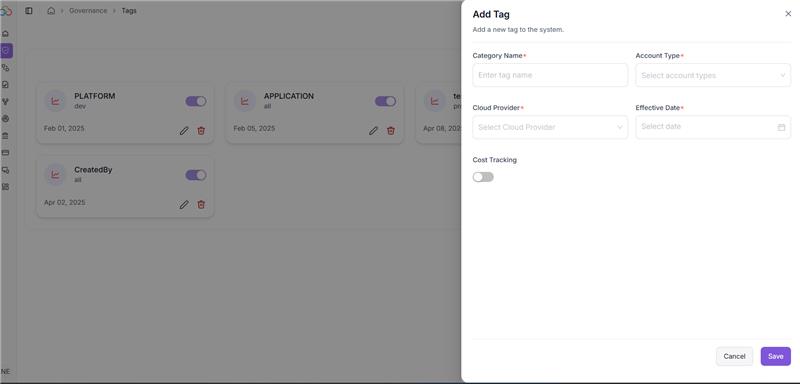HYMDL Tags: Enhancing Multi-Cloud Tagging Strategy and Consistency
Overview
Managing cloud resources effectively across multiple platforms requires a robust tagging strategy to ensure visibility, organization, and governance. HYMDL Tags provide a powerful solution to achieve consistency and efficiency in multi-cloud environments. This documentation explains how HYMDL Tags can be used to implement a coherent tagging strategy, promoting operational excellence and simplifying resource management.
Key Features
- Centralized Tag Management: HYMDL provides a centralized interface for creating, managing, and enforcing tags across all cloud environments.
- Consistency Across Clouds: Ensures uniform application of tags, reducing discrepancies and enhancing resource tracking.
- Customizable Tag Policies: Supports the creation of custom tag policies to meet specific organizational needs and compliance requirements.
- Automated Tagging Workflows: Facilitates the automation of tagging processes to ensure that new and existing resources are appropriately tagged.
- Integration with Cloud Providers: Seamless integration with major cloud providers like AWS, Azure, and GCP to manage tags across multi-cloud environments.
Benefits of Using HYMDL Tags
- Improved Resource Visibility: Tags provide a clear and structured view of resources across all cloud platforms, making it easier to locate and manage them.
- Cost Management: Enables detailed cost tracking and allocation by associating costs with specific projects, departments, or environments.
- Enhanced Security and Compliance: Consistent tagging helps enforce security policies and ensures compliance with industry regulations by enabling better auditability.
- Operational Efficiency: Simplifies the management of complex cloud environments by organizing resources logically and making them easier to manage and automate.
Implementing a Multi-Cloud Tagging Strategy with HYMDL
Step 1: Define Tagging Taxonomy
- Establish a standardized set of tags that align with your organizational structure and business objectives.
- Common tags include environment (e.g., development, production), department, project, cost center, and owner.

Step 2: Configure Tagging Policies
- Use HYMDL to create tagging policies that define required and optional tags for each type of resource.
- Ensure that policies are applied consistently across all cloud environments to maintain uniformity or selectively based on environment type.

Step 3: Enforce Tag Values
- Define approved values for each Tag Category. HYMDL provides automation to convert the defined Tags key/value pairs into Cloud Providers tag policies.
Best Practices for Tagging Strategy
- Consistency is Key: Use consistent naming conventions and capitalization across all tags to prevent duplication and confusion.
- Limit the Number of Tags: Focus on essential tags that provide the most value to avoid overcomplicating the tagging strategy.
- Regularly Review and Update: Periodically review your tagging strategy to ensure it continues to meet evolving business needs and cloud environments.
Conclusion
HYMDL Tags are a vital tool for maintaining a consistent and effective multi-cloud tagging strategy. By centralizing and automating tag management, HYMDL enhances visibility, cost control, and compliance across all cloud resources, empowering organizations to achieve better operational efficiency and governance.